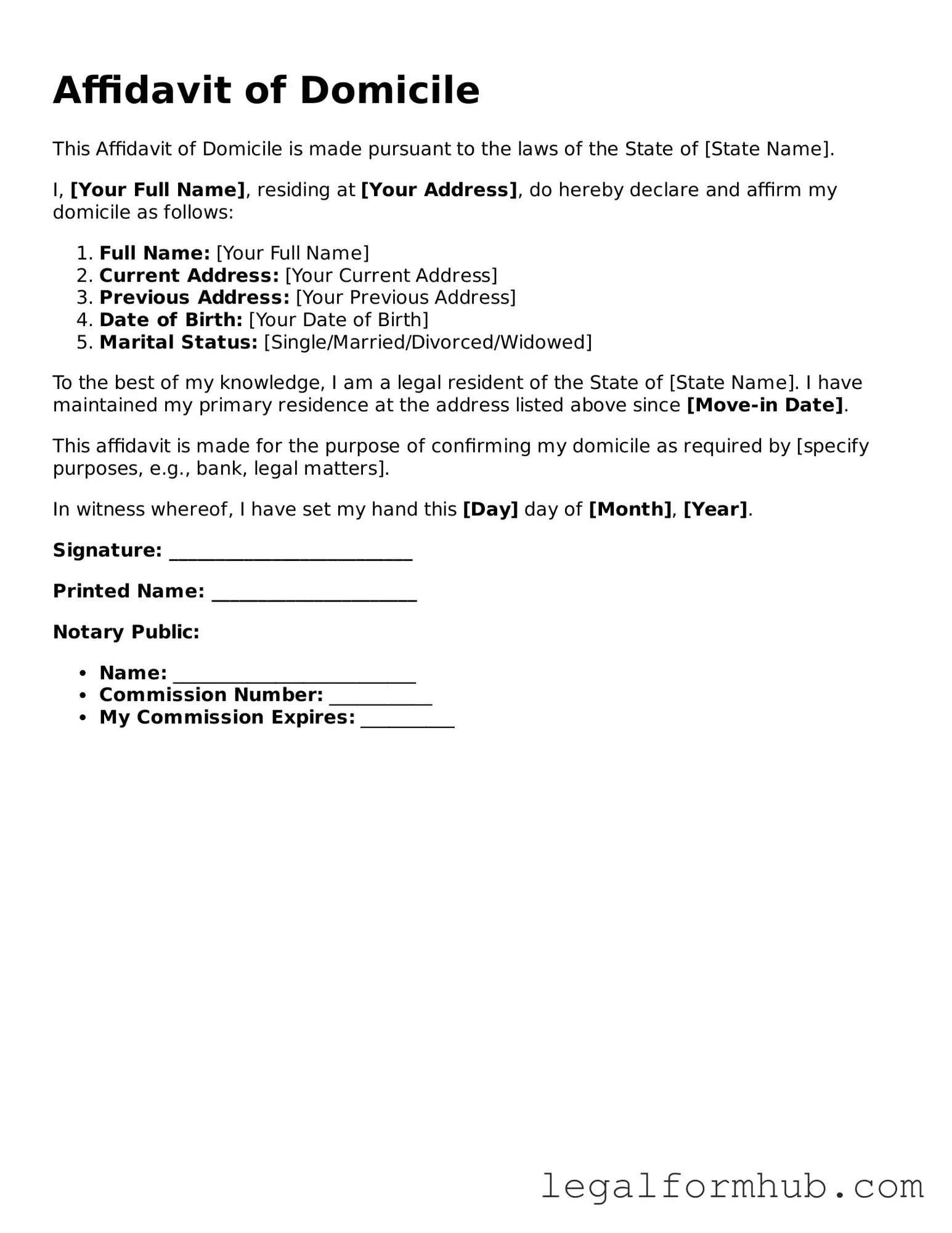The Affidavit of Domicile is similar to a Will in that both documents address the distribution of a person's assets after death. A Will outlines the wishes of the deceased regarding how their property should be divided among beneficiaries. While the Affidavit of Domicile provides proof of a person's residence at the time of death, the Will specifies who will inherit the estate. Both documents are essential for settling an estate, but they serve different purposes in the process.
An Estate Inventory is another document that shares similarities with the Affidavit of Domicile. This inventory lists all assets owned by a deceased person, including real estate, personal property, and financial accounts. While the Affidavit of Domicile establishes the decedent's primary residence, the Estate Inventory provides a comprehensive overview of their entire estate. Both documents are important for estate administration and can be used to verify the decedent's assets.
In the realm of legal documentation, the importance of accurately completing forms cannot be overstated, especially when it comes to establishing residency. For those in Louisiana, the Letter of Residency serves as a critical tool for verifying one's residential status, whether for school enrollment or accessing essential benefits, thereby ensuring that individuals can secure the necessary resources and recognition they need in their community.
The Power of Attorney is another document that can be likened to the Affidavit of Domicile. A Power of Attorney grants an individual the authority to make decisions on behalf of another person, often in financial or medical matters. While the Affidavit of Domicile is used posthumously to establish residency, the Power of Attorney is utilized during a person's lifetime to manage their affairs. Both documents are significant in ensuring that an individual's wishes are respected, whether in life or after death.
Similar to the Affidavit of Domicile, a Trust Declaration outlines how a person's assets will be managed and distributed. A Trust can take effect during a person's lifetime or after their death, depending on its terms. The Affidavit of Domicile, however, specifically addresses residency and is typically used for estate purposes. Both documents play a role in estate planning and can help ensure that a person's wishes are honored.
The Letter of Instruction can also be compared to the Affidavit of Domicile. This document provides guidance to heirs and executors regarding the deceased's wishes, including funeral arrangements and asset distribution. While the Affidavit of Domicile confirms the primary residence, the Letter of Instruction serves as a personal communication tool to clarify intentions. Both documents can facilitate the estate settlement process by providing important information to those involved.
Lastly, a Beneficiary Designation is similar to the Affidavit of Domicile in that it determines how assets will be transferred upon a person's death. This document specifies who will receive certain assets, such as life insurance policies or retirement accounts. The Affidavit of Domicile, in contrast, establishes residency and may be used to support the validity of the Beneficiary Designation. Both documents are critical in ensuring that assets are distributed according to the decedent's wishes.
